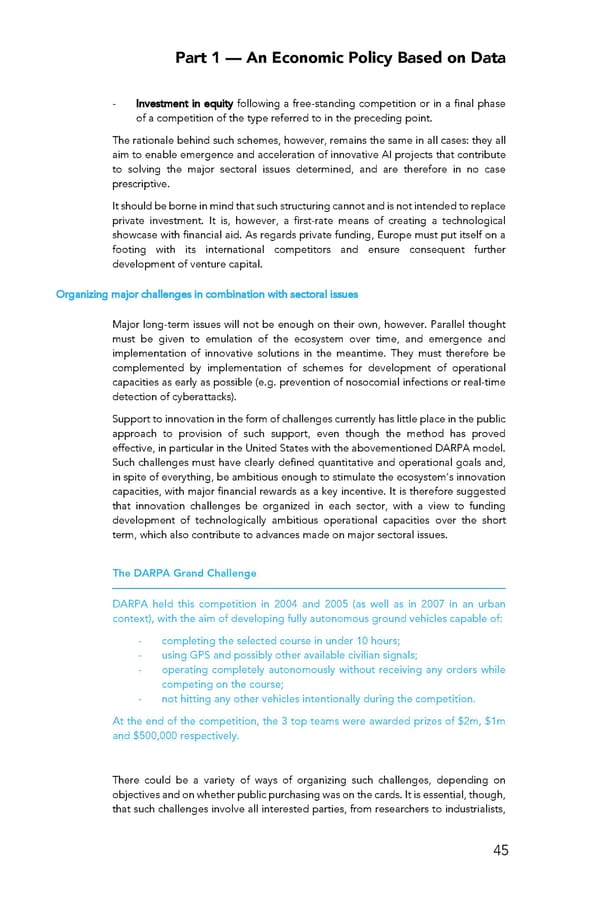Part 1 — An Economic Policy Based on Data - Investment in equity following a free-standing competition or in a final phase of a competition of the type referred to in the preceding point. The rationale behind such schemes, however, remains the same in all cases: they all aim to enable emergence and acceleration of innovative AI projects that contribute to solving the major sectoral issues determined, and are therefore in no case prescriptive. It should be borne in mind that such structuring cannot and is not intended to replace private investment. It is, however, a first-rate means of creating a technological showcase with financial aid. As regards private funding, Europe must put itself on a footing with its international competitors and ensure consequent further development of venture capital. Organizing major challenges in combination with sectoral issues Major long-term issues will not be enough on their own, however. Parallel thought must be given to emulation of the ecosystem over time, and emergence and implementation of innovative solutions in the meantime. They must therefore be complemented by implementation of schemes for development of operational capacities as early as possible (e.g. prevention of nosocomial infections or real-time detection of cyberattacks). Support to innovation in the form of challenges currently has little place in the public approach to provision of such support, even though the method has proved effective, in particular in the United States with the abovementioned DARPA model. Such challenges must have clearly defined quantitative and operational goals and, in spite of everything, be ambitious enough to stimulate the ecosystem’s innovation capacities, with major financial rewards as a key incentive. It is therefore suggested that innovation challenges be organized in each sector, with a view to funding development of technologically ambitious operational capacities over the short term, which also contribute to advances made on major sectoral issues. The DARPA Grand Challenge DARPA held this competition in 2004 and 2005 (as well as in 2007 in an urban context), with the aim of developing fully autonomous ground vehicles capable of: - completing the selected course in under 10 hours; - using GPS and possibly other available civilian signals; - operating completely autonomously without receiving any orders while competing on the course; - not hitting any other vehicles intentionally during the competition. At the end of the competition, the 3 top teams were awarded prizes of $2m, $1m and $500,000 respectively. There could be a variety of ways of organizing such challenges, depending on objectives and on whether public purchasing was on the cards. It is essential, though, that such challenges involve all interested parties, from researchers to industrialists, 45
 For a Meaningful AI - Report Page 45 Page 47
For a Meaningful AI - Report Page 45 Page 47